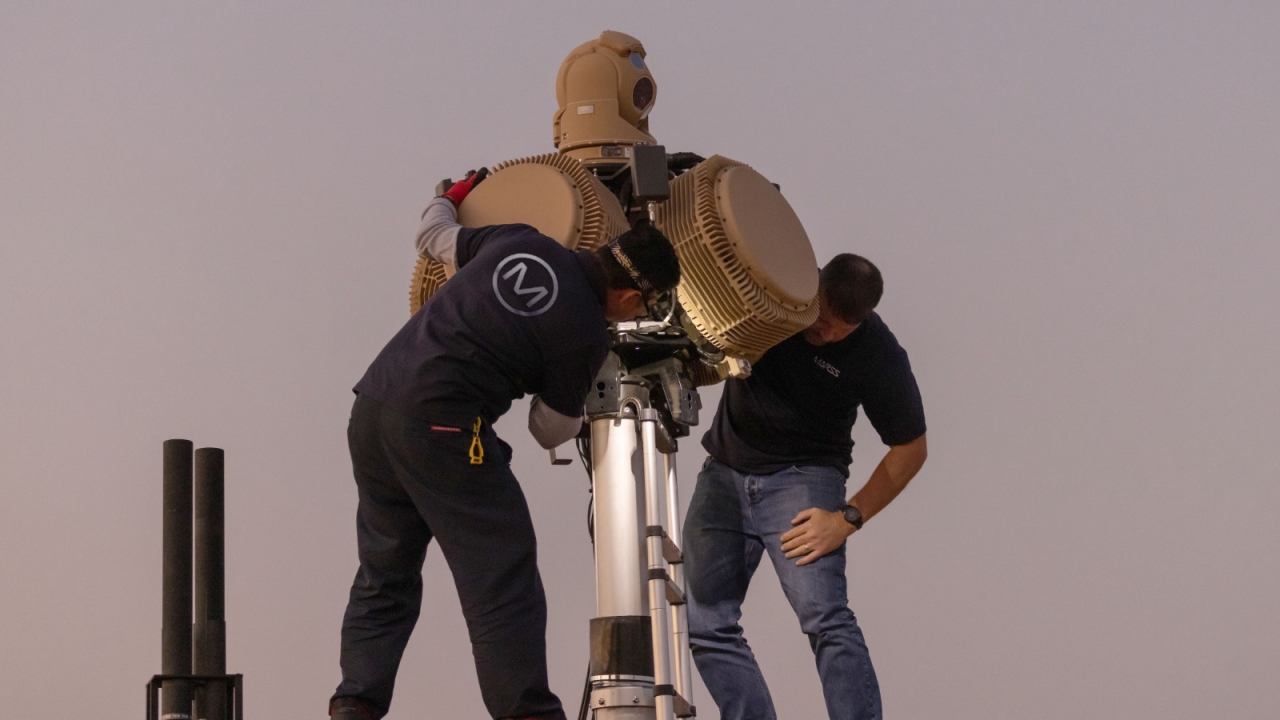Blazing a trail on fire-fighting flexibility

But while
Britt Gourley, Aero Union’s energetic new CEO told Arabian Aerospace: “The system doesn’t care what it’s spraying.” He highlighted
But the raison d’etre of MAFFS is fire-fighting. It is a self-contained, reusable, pneumatically-powered, roll-on/roll-off modular aerial fluid dispersal system that can be installed in any C-130-E or -H equipped with the USAF’s standard 463L cargo-handling system.
The system consists of five tank modules, with a total capacity of 2,700 gallons, each one containing a pressure tank where compressed air is stored at 1200psi. This is used to ‘pump’ the retardant from the tanks. The system also includes control and dissemination modules. The whole 11,000-lb system is pallet-mounted, allowing a standard Hercules transport to be re-roled as a fire-fighting ‘air tanker’ in less than two hours.
The tanks are filled on the ground and the pressure tanks are recharged using a compressor module that stays at the air base during operations.
The role of the air tanker is not normally to drop water or retardant directly on a fire, as this is seldom effective, though such direct action can be undertaken if the fire threatens something important. Instead, the primary purpose is to check the spread of the fire and to control its direction, laying down retardant ahead of the blaze or at its edges to prevent or slow its spread.
The tanks can be filled with water or, more usually, with a fire-retardant chemical mixed with water. This works by creating a chemical reaction so that wood or vegetation in the path of the flames will no longer support the fire.
It is made of 80 to 85 per cent water, 10 to 15 per cent ammonium sulphate (a gelling agent), and a bright red colouring. The bright colour helps pilots to see where they have dropped previous loads and to monitor the accuracy of their drops. The retardant breaks down within days into a growth-promoting fertilizer and, thus, doubles as a post-fire reforestation fertilizer.
The retardant is dispersed through two large pipes, which fold down and exit over the ramp, discharging the chemical alternately from a series of tanks to keep the aircraft’s centre of gravity within limits. Various flow rates can be pre-selected at the control module, allowing a variety of coverage patterns to be used. At maximum flow rate, a MAFFS-equipped Hercules can discharge its entire load of retardant over a pre-determined drop zone in as little as five seconds, or alternatively, the aircraft can make a number of smaller or less dense drops.
The new MAFFS 2 system differs from the legacy design in having a single tank and a single dispersal nozzle that exits through the port para door instead of over the ramp. This allows the aircraft to remain pressurized throughout the flight.
MAFFS 2 has a capacity of up to 3,400 gallons and allows a greater number of coverage rate options, while the new nozzle prevents retardant from hitting the tail and rear fuselage, reducing the amount of time and money that has to be allocated to cleaning the corrosive retardant from the aircraft. The new system also has an on-board compressor, allowing the tank to be charged en route to the fire, rather than on the ground. This reduces both the requirement for ground support personnel and turnaround times, thereby allowing more missions to be flown in any particular time period.
The new-generation MAFFS unit was declared fully operational in February 2009 and Aero Union is now actively marketing the system to
But the biggest market for MAFFS 2 may be in the
With growing concerns surrounding the operation of many of the ex-military aircraft types that have hitherto formed the backbone of the US fire-fighting fleet, a drive is underway to embrace a new approach, and to introduce new aircraft types.
Britt Gourley said: “There is a need for a new platform and the industry is moving towards the C-130 model. We hope to migrate customers to the C-130 and MAFFS II.”
It is less clear who would operate these new aircraft and Gourley admits that: “Arguments for nationalization are being marshalled.”
He said the industry needed to be more sophisticated, with a more professional approach and with no place for any kind of “cowboy” approach, with an end to deferred maintenance and the use of what he called “hair brained platforms” (cheap vintage ex-military aircraft of questionable airworthiness). That era ended with the much-publicised accidents in 2003.
He believes that the private contracting model remains viable in the longer term. Though capital costs are huge, the US Government could provide long-term contracts and relatively cheap credit, while the maintenance costs of more modern aircraft will be lower.
Moreover, the versatility of the Hercules and the roll-on/roll-off nature of the MAFFS would allow companies to earn more money during that season by flying utility and support missions as well as air tanker missions and to earn revenue outside the ‘fire season’, compensating for the higher capital cost by branching out into other tasks and roles – including bug spraying, narcotics eradication, oil dispersion and freight hauling.
Stay up to date
Subscribe to the free Times Aerospace newsletter and receive the latest content every week. We'll never share your email address.

